Reviews
Ascenseur pour l’échafaud
Louis Malle
France, 1957
Credits
Review by Evan Kindley
Posted on 17 November 2010
Source Netflix VOD
Categories Malle Entendu: The Ecstatic, Eclectic Cinema of Louis Malle
To call Elevator to the Gallows a transitional film might seem odd, since the movie was Louis Malle’s first feature, made at the youthful age of 24 (unless one counts Le monde du silence, his collaboration with Jacques Cousteau). But bear with the adjective; the movie earns it in other ways. Released in 1957, a good two years before the first cresting of the New Wave, Elevator marked a transition from the elegant policiers of Jules Dassin and Jean-Pierre Melville to the more open-ended, generically ambiguous early works of Jean-Luc Godard and François Truffaut.
Most of all, though, the word fits because Elevator is devoted to recording transitional moments. It’s a film of waiting, wandering, shuttling, traveling, and being stuck: everything that happens between one important place or event and another. Much of the movie has the air of being directed by a second unit, charged with stockpiling atmospheric moments for later use in stringing together dramatic climaxes. For a thriller, the film is extraordinarily slow-paced, and its unusual structure (on which more in a moment) virtually negates the plot’s forward motion, so crucial to most suspense movies. Even the score, improvised in a single session by Miles Davis with a quartet of French players, ambles along and bides its time, with little use for the film composer’s usual agenda of hurrying the action along and underlining key emotional responses.
The film’s opening scenes are its most conventionally motivated. We begin with an iris opening on Jeanne Moreau’s pallid, tear-dappled face, whispering “Je t’aime”—a moment of physical intimacy, apparently. But the camera pulls back to reveal that she, Florence Carala, is alone, speaking into a telephone—the first of many surprises sprung by technology in this film. Malle then cuts to a matching shot of Maurice Ronet in mid-whirl on the other end of the line—her lover, Julien Tavernier, who responds, “Without your voice, I’d be lost in a world of silence.” As the credits come up and Davis’ - trumpet enters for the first time, Malle shoots each of the lovers through frames - she in a phone booth, he through the window of an office buildings - as if keeping them under surveillance, a strategy that anticipates the introduction of another pair of adulterers, seventeen years later, in Francis Ford Coppola’s The Conversation.
In just a few minutes, Malle and his co-writer Roger Nimier economically give us to understand that Florence is married to the powerful war profiteer Simon Carala, and that she and Julien (an employee of the Carala company with previous military experience in Indochina and Algeria) have hatched a plot to do away with him. Moments after getting off the phone with Florence, Julien gives instructions to his secretary not to disturb him, walks out to the ledge of the building, uses a grappling hook to ascend to the floor above and, once upstairs, breaks into Carala’s office and murders its occupant, without being seen leaving his own office. An alibi for his whereabouts at the time of Carala’s murder can be honestly provided by his secretary. The perfect crime?
From there the film branches out in three directions, each with its own distinct aesthetic and sense of tempo. Julien, realizing he’s left evidence of his break-in - the grappling hook - up on the building’s ledge, tries to return to the scene of his crime, only to get stuck between floors in an elevator as the building’s power shuts down for the night. Meanwhile, his car is lifted by Véronique, a florist, and her ne’er-do-well boyfriend Louis, who escape in it to the countryside where they end up getting in a fender bender with the Beckers, a couple of German tourists. As they drive off, Florence catches sight of Véronique in the passenger side window and wrongly assumes that Julien has abandoned her. This sets her off on a night of melancholy wandering, drifting through the streets of Paris in search of some solace for her pain. The remainder of the film will cut between the criminal couple, the jilted lover, and the murderer imprisoned in a three-by-three chamber. By this contrivance Malle manages to make what often feels like three films at the same time.1
Taking issue with François Truffaut’s admittedly hyperbolic statement that “[a]ll of Louis Malle, all his good qualities and faults, was in Elevator to the Gallows,” Terence Rafferty has suggested that Malle never made another film like Elevator to the Gallows again. But how could he, when the film is not exactly like any one thing, certainly not a traditional série noire? Indeed, its tonal versatility is one of its strengths, and in retrospect it makes sense that its director would go on to do a bit of everything. There are moments of humor, tenderness, suspense, satire, eroticism, and genuine political outrage, and you’re never quite sure what tone will be struck when, a pleasing waywardness that Davis’ dreamy score also serves to reinforce.
There is one common thread between the sections, which I’ve mentioned already, and that is the intrusive presence of technology. This is most obvious in the elevator scenes, of course, which play like a kind of engineer’s nightmare, as Julien methodically inspects every square inch of the elevator by the light of his cigarette lighter, pries up the carpet looking for loose panels, and eventually lowers himself down into the shaft. (Thankfully, none of this solitary activity is accompanied by monologue or voice-over, as in Danny Boyle’s recent 127 Hours; Malle follows in the wordless tradition of Dassin’s Rififi by having Ronet say virtually nothing throughout these scenes—“lost in a world of silence” indeed.) But technology is foregrounded (often literally) everywhere in Elevator to the Gallows: the close-ups on a secretary’s electric pencil sharpener in the opening office scenes; the flashing electric sign outside and gaudily decorated pinball machine inside a café visited by Florence; Julien’s beautiful convertible, first invoked by Florence just before the murder (“When it’s done, drive over in your big car”) and later admired by Véronique (“Look, a push of the button! That’s the kind of life I want”), not to mention Horst Becker’s Mercedes with gull wing doors; and the tiny snapshot camera that Louis and Véronique swipe from Julien’s glove compartment, which ultimately contributes to their undoing.
Nearly every scene of Elevator to the Gallows features some electric or mechanical gadget, in other words, that would have struck its first audiences as novel (and which today seem quaintly chic; I’ll admit that in the office scenes I couldn’t help thinking of Mad Men). In this respect, at least, Malle was ahead of some of his more celebrated contemporaries. Though long synonymous with cinematic modernity, the New Wave directors were not particularly sensitive to the role of technology in everyday life: the remarkably tame imaginings of the future in Alphaville and Fahrenheit 451 speak to a certain lack of interest in such devices (with the exception, of course, of the movie camera).2 Malle may or may not have been attracted to the newfangled hardware that litters Elevator to the Gallows’ mise-en-scène, but he was clearly interested in it, and in how it could renovate some old-fashioned themes and material. The film’s slightly bizarre title - changed to the highly inappropriate Frantic for its original American release - already scrambles together twentieth-century (ascenseur) and medieval (chaffaud) technologies: it also suggests, beyond the first-order allusion to Julien’s potential punishment, that the march of technology is both transporting and fatal.
For all this, it’s a lower-tech effect that makes the most difference to the film’s ultimate success: the face of Jeanne Moreau. What impressed the film’s first audiences, and what viewers today are still most likely to remember, is Moreau’s macabre intensity as she wanders the Champs Elysée at night, hair blowing wildly in the wind, lit only by natural light for the first time in the history of cinema, and the sadness in her voice as she catches her reflection in a car window: “I look awful. I’m mad.” (She doesn’t and isn’t, but the moment resonates nonetheless.) This is the film that made Moreau a star, and suggested to directors like Truffaut and Buñuel that there were amazing possibilities in her pallid, severe expressions. It seems unlikely that Florence’s character got nearly as much attention in the novel from which Elevator to the Gallows is adapted: the situations of Julien trapped in the elevator and Véronique and Louis on the lam are much more dramatically loaded. Yet it’s Florence’s nocturnal odyssey that Malle seems to seize upon as the model for his film (and perhaps career?) as a whole: a drift through the dark from one thing to the next, more or less aimless, looking for something that might justify a frustrated passion.
- At the risk of invoking a precedent too lofty for the movie to bear, I was reminded a little of James Joyce’s Ulysses, which also has a compacted time frame, memorable nocturnal scenes, and three discrete subjective protagonists whose paths almost never intersect.↩
- Ironically it took an older filmmaker, Jacques Tati, to thematize technology - along more absurdist, dystopian lines, of course - in films like Mon Oncle (released one year after Elevator), Playtime, and Trafic.↩
More Malle Entendu: The Ecstatic, Eclectic Cinema of Louis Malle
-
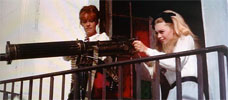
Viva Maria!
1965 -
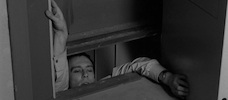
Elevator to the Gallows
1957 -
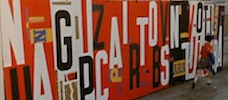
Zazie dans le métro
1960 -
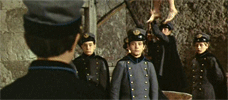
William Wilson
1968 -

Black Moon
1975 -

Lacombe, Lucien
1974 -
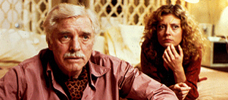
Atlantic City
1980 -
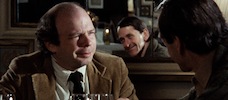
My Dinner with Andre
1981 -
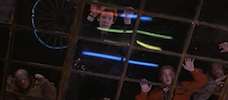
Crackers
1984 -
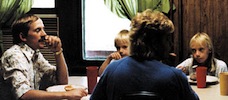
God’s Country
1985 -

Vanya on 42nd Street
1994
We don’t do comments anymore, but you may contact us here or find us on Twitter or Facebook.



